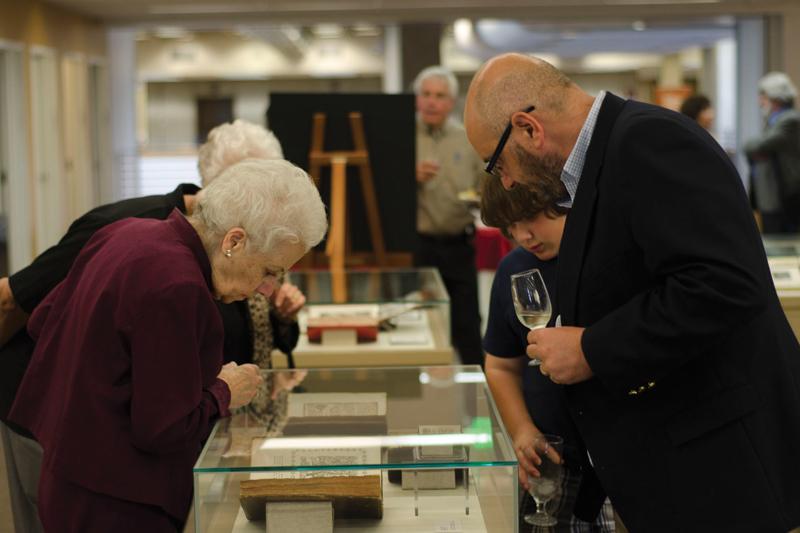
Photo courtesy of Nabil Sakib
The Armenian Studies Program and College of Arts of Humanities held a reception and lecture in honor of the 500th anniversary of Armenian printing on Sunday in the Henry Madden Library during Armenian Cultural Month.
Faculty and students of the Armenian Studies Program were on hand with university President John Welty, Provost William Covino, Dean of the College of Arts and Humanities Vida Samiian, and guest speaker Kevork Bardakjian Marie Manoogian Professor of Armenian Language and Literature of the University of Michigan, Ann Arbor.
The reception was held on the second floor next to the Leon S. Peter’s Ellipse Gallery where there’s an exhibit of Armenian literature, including pieces from the Matenadaran, Mesrop Mashtots Institute of Ancient Manuscripts in Yerevan. Featured prominently in the exhibit is the Codex Etchmiadzin, which features four miniature paintings dating to the 6th century bound at the end of the book.
While Saint Mesrop Mashtots created the Armenian alphabet in the year 405 A.D., Armenians did not begin publishing books until the mid-16th century, nearly 200 years after Johannes Gutenberg invented the printing press.
Dr. Welty, a longtime supporter of the Armenian Studies Program, spoke a few words in honor of the exhibit.
“Today is a great example of what a difference private support makes to a university and the fact that we enjoy this exhibit and get to learn and reflect upon years and years and years of history is a great tribute to those who have supported the university.”
Sergio La Porta, the Haig and Isabel Berberian chair in the Armenian Studies Program, remarked upon the intellectual progress over the centuries by Armenians and their utilization of technology despite being so small in numbers.
“Looking on this wonderful collection of books, and also looking at the screen and what’s being done electronically, it reminds me of how Armenians have always been forward-thinking in how they’ve approached their life and their culture,” La Porta said.
Armenians were one of the first to develop printing in the Middle East and the first to develop photography in Jerusalem. They’re currently at the head of digital technologies in the area and are put to special work archiving histories.
“I think the printed book exhibit here today is a wonderful testament to that forward thinking and that vision of how Armenians see their culture, not only as a mark of their past, but as a guidepost to their future,” La Porta said.
Dean Samiian, another strong supporter of the Armenian Studies Program on campus, commented on the full turnout of the event.
“It is really a pleasure to see what our small Armenian studies, with only two faculty members, can do.”
“When I think about what the Armenian studies has done over the last 30 years, it has been the most engaged program.”
Following the reception, Bardakjian gave a special lecture in honor of the event entitled, “The Impact of the Armenian Script and Printing on Armenian Identity and Letters.”
The 500th anniversary of Armenian printing also carries special significance as this year Yerevan was chosen as the 12th World Book Capital by UNESCO.
The exhibit will be open for viewing on the second floor of Henry Madden Library until the end of October.




